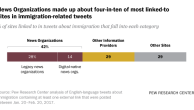
Across Western Europe, public news media are widely used and trusted sources of news
In seven Western European countries surveyed, the top main source for news is a public news organization – such as the BBC in the UK, Sveriges Television/Radio (SVT/Radio) in Sweden or ARD in Germany – rather than a private one.








